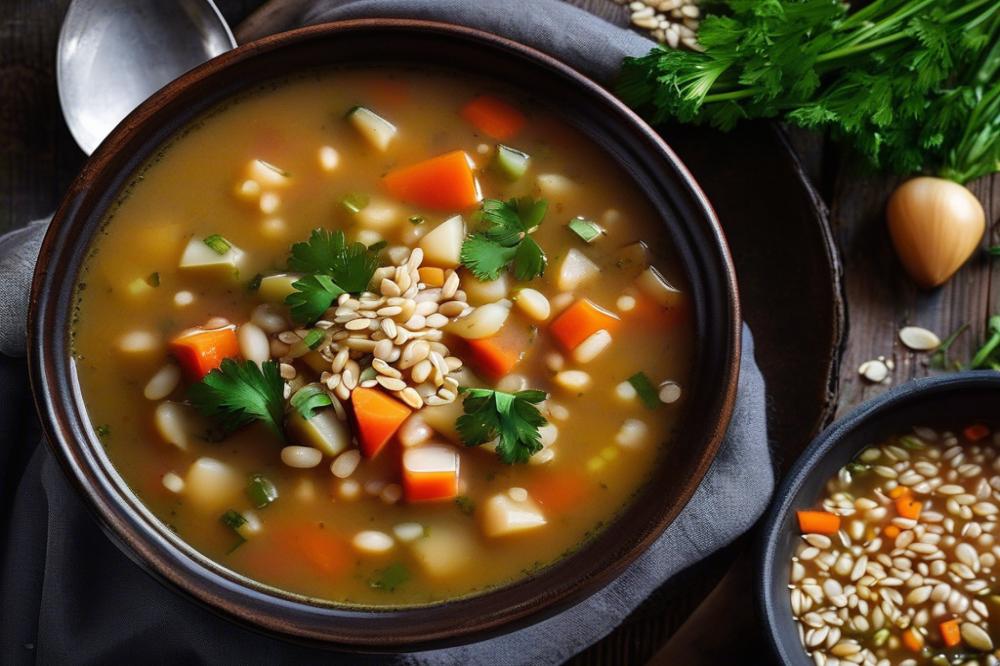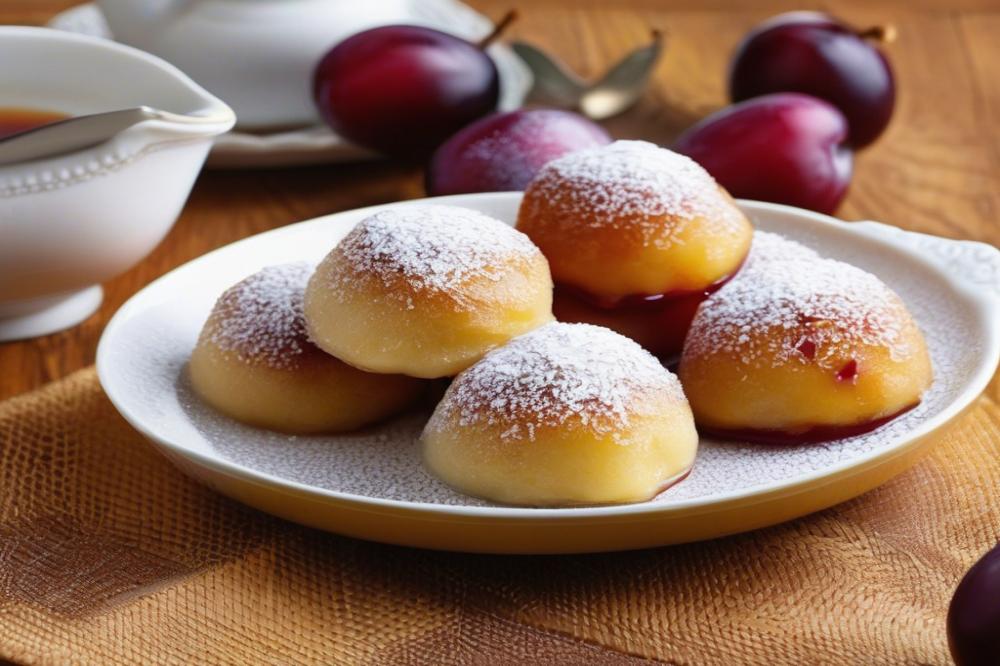Introduction
Tripas à Moda do Porto, also known as Porto-Style tripe stew, is a beloved dish in Portuguese cuisine that embodies the spirit of comfort food. It holds a cherished place in the hearts of many locals and those who appreciate flavors steeped in tradition. This hearty dish showcases the ingenuity of Portuguese cooking, where every ingredient tells a story.
tripe is the primary ingredient of this stew. Often viewed as an acquired taste, its rich flavors and unique texture contribute to its warm, comforting nature. Traditional recipes vary, reflecting personal touches passed down through generations. Families often gather to share tips on cooking tripe, enhancing the experience around the kitchen table.
The historical context of this dish reveals its roots in the city of Porto. During earlier centuries, the people of Porto faced economic challenges. They embraced tripe, which was readily available, and transformed it into something extraordinary. As a result, it became a regional specialty that symbolizes resilience and creativity in the face of hardship.
This stew carries significance beyond just its taste. It evokes a sense of community among those who prepare it. Food history intertwines with personal memories, making it more than just a recipe for many. In every bowl, you can find a mix of tradition, culture, and shared experiences, which make Tripas à Moda do Porto a true representation of Porto food.
Understanding Tripas à Moda do Porto

Tripas à Moda do Porto is a traditional Portuguese stew famous for its rich flavors and hearty ingredients. The main component is tripe, which comes from the stomach of cows. Many might find tripe peculiar, but this dish has deep roots in the food history of Portugal. Along with tripe, the stew often includes beans, various meats, and vegetables, creating a filling meal that warms the soul.
This dish holds significant cultural relevance in Porto food. During the 14th century, the people of Porto had a custom of giving the best cuts of meat to sailors. The leftovers, like tripe, became the foundation for this stew. It reflects the resourcefulness of the locals, transforming humble ingredients into something comforting and delicious. Eating Tripas à Moda do Porto connects people to the past and the traditions of the area.
When compared to other traditional recipes, it stands out for its unique combination of flavors. For example, many Portuguese stews use chicken or fish as their primary ingredients, but this one focuses on tripe. Other regional specialties from Portugal might emphasize seafood, while this stew showcases the heartiness of land-based ingredients. Cooking tips often advise slow cooking to enhance the flavors, making it a labor of love for those preparing it.
Many people regard Tripas à Moda do Porto as comfort food. Its rich texture and savory taste make it a perfect dish for colder days. Just like other hearty dishes, it brings warmth and satisfaction to those who enjoy it. Preparing this dish involves patience, but the result is undeniably rewarding. It invites people to gather around the table, foster connections, and share stories.
Ingredients and Cooking Instructions

List of Ingredients with Quantities
To make a traditional Porto-Style Tripe Stew, gather the following ingredients:
- 1 kg of cleaned tripe
- 300 g of chorizo sausage, sliced
- 200 g of smoked meat (like pork belly or ribs)
- 1 large onion, finely chopped
- 3 cloves of garlic, minced
- 2 bay leaves
- 1 teaspoon of paprika
- 400 g of canned chickpeas, drained
- 1 large carrot, diced
- 2 medium tomatoes, chopped
- Salt to taste
- Black pepper to taste
- Olive oil, for cooking
- Fresh parsley, chopped (for garnish)
Detailed Cooking Method Step by Step
Start by cleaning the tripe if it isn’t pre-cleaned. Cut it into bite-sized pieces. Place the tripe in a large pot and cover it with water. Simmer for around 1 to 2 hours. The goal is to soften the tripe. Once tender, remove it from water and set aside.
Use the same pot to heat a few tablespoons of olive oil over medium heat. Add the chopped onion and cook until it becomes translucent. Stir in the minced garlic. Allow the aroma to fill your kitchen. Next, add the sliced chorizo and smoked meat. Cook for about 5 minutes until the meats get a nice color.
Incorporate the chopped tomatoes, diced carrot, and bay leaves. Stir everything together. Let it cook for another 5 minutes. This builds flavor. After that, mix in the tripe and cover everything with enough water to create a stew consistency. Season the dish with paprika, salt, and black pepper.
Allow your stew to simmer gently for 1 hour. The right amount of time enhances the flavors. You might want to check occasionally. Add the drained chickpeas in the last 15 minutes of cooking.
When serving, remember to sprinkle fresh parsley on top. This makes for a beautiful presentation. Enjoy your Porto food with crusty bread for a complete meal.
Tips for Selecting Quality Tripe and Other Ingredients
When it comes to picking tripe, freshness is key. Look for tripe that is white to off-white in color. Avoid any pieces that look grayish or discolored. Good tripe should be firm and have a slight elasticity when you press it. It’s also wise to talk to your butcher. Ask about the source of the tripe for quality assurance.
For the chorizo, choose a brand with strong flavors. A well-seasoned sausage will add depth to your stew. If possible, buy from a store specializing in traditional recipes. This often guarantees a better selection of meats. Fresh vegetables make a visible difference in taste, so pick vibrant and firm carrots and tomatoes.
Cooking tips can help, too. If you enjoy richer flavors, consider adding a dash of red wine during the simmering stage. This can enhance the stew’s depth. Think about serving it the next day. Flavors meld beautifully in a day-old stew, making it a fantastic comfort food for leftovers.
Nutritional Information

The ingredients in a classic tripe stew bring both flavor and nutrition. Tripe, for instance, is rich in protein. It also contains essential vitamins and minerals like Vitamin B12 and zinc. Beans are commonly added to the dish, offering fiber and plant-based protein. These legumes can help with digestion and provide additional nutrients.
Tomatoes, another key ingredient, are a good source of antioxidants. They aid in heart health and may reduce the risk of certain diseases. This stew also typically includes onions and garlic, which have their own health benefits. Garlic is known for its immune-boosting properties, while onions can help manage blood sugar levels.
Health Benefits and Considerations
Comfort food often provides more than just warmth; it can also be nourishing. Hearty dishes like this one offer energy to keep you going. With a balance of protein, fiber, and vitamins, it’s a meal that sustains. However, moderation is important. Because of its richness, portion sizes should be reasonable to avoid overeating.
It’s also wise to consider any dietary restrictions. Those following a low-fat diet might want to be mindful of the ingredients. Variations of the stew can include leaner meats or additional vegetables. Traditional recipes can often be adapted without losing the essence of the dish.
Portion Sizes and Meal Balance
Cooking Tips and Variations

Common Mistakes to Avoid When Cooking Tripe
Tripe can be tough if not cooked properly. Many people skip the initial cleaning step, which is crucial. Rinse the tripe thoroughly under cold water. Neglecting to soak it beforehand can lead to a rubbery texture. Cooking at too high a temperature often leads to the same result. Remember that slow cooking allows flavors to develop and the meat to become tender. Keep an eye on the cooking time; overcooking can also ruin this hearty dish.
Suggestions for Enhancing Flavors or Adapting the Recipe
Using fresh herbs can add brightness. Fresh parsley, for instance, brings color and a fresh taste. Incorporate spices like paprika or smoked paprika for depth. Consider adding a splash of red wine to enrich the sauce. Variations from traditional recipes show such diversity in Portuguese cuisine. For a twist, try using chickpeas for added texture and protein. Extra vegetables, like carrots or bell peppers, can also elevate the dish. Don’t be afraid to experiment, as long as you stay true to the essence of Porto food.
Ideas for Side Dishes that Complement the Stew
A simple salad of mixed greens and vinaigrette can refresh the palate. Bread is another excellent choice; crusty rolls or a traditional Portuguese loaf works well for dipping. Consider serving rice as a neutral base that absorbs the rich sauce. Some people enjoy mashed potatoes, providing a comforting contrast. Lastly, a glass of local wine can enhance the meal’s overall experience. Each side adds something special to the table.
The History of Tripas à Moda do Porto
This rustic dish has its roots deep in the heart of Porto, Portugal. Once upon a time, tripe was considered a humble ingredient, often eaten by the working class. The origin of this meal dates back to the 15th century when sailors would bring back various ingredients from their travels. Throughout the years, it evolved into a beloved stew that showcases regional flavors and cooking traditions.
Tripas à Moda do Porto holds a special place in the culinary landscape of Porto food. This hearty dish features tripe simmered with beans, vegetables, and occasionally meats. Families often share traditional recipes handed down through generations. For many, preparing this stew is not just about food; it brings people together around the kitchen table. It represents comfort food for countless Porto residents.
Over the years, the stew has been celebrated in festivals that honor Portuguese cuisine. These events highlight the importance of regional specialties and promote local food culture. One notable celebration is the “Festa de São João,” a vibrant festival held every June. During this time, locals and visitors alike enjoy various Porto dishes, but Tripas à Moda do Porto often takes center stage. Not only is it a culinary experience, but it also fosters community spirit and pride in the city’s history.
Wrapping Up the Experience with Tripas à Moda do Porto
Tripas à Moda do Porto holds a special place in the heart of Portuguese cuisine. This traditional dish is more than just a meal; it tells a story of the region’s history and its connection to the sea. Its rich flavors and hearty ingredients make it a perfect representation of comfort food. Many families in Porto have their own unique recipes passed down through generations. Each variation adds to the charm of this beloved stew, showcasing the creativity of home cooks.
Everyone should consider trying their hand at this delightful dish. Cooking tripe may seem challenging, but the process can be very rewarding. The aromas that fill your kitchen will certainly evoke a sense of warmth. When you gather your ingredients and begin to create, you take a step into a world of flavors that is both inviting and fulfilling. Invite friends and family to join you, and share the experience together. The joy of cooking is often found in the connections made around the dining table.
Ultimately, exploring Portuguese cuisine reveals a landscape rich with regional specialties. Each dish offers a glimpse into local traditions and customs. From the rolling hills of the Douro Valley to the vibrant streets of Porto, flavors abound that are waiting to be discovered. So why not embrace this culinary adventure? You might just find new favorites along the way. Enjoy the vibrant culture and the delightful tastes that make Portugal’s food scene so remarkable.



